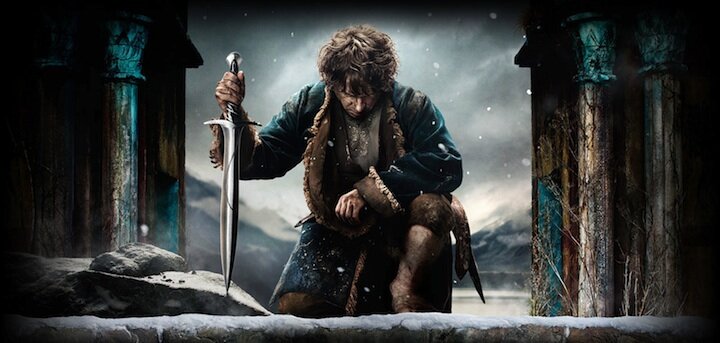Star Ratings
| Amazing | |
| Well good | |
| Fun | |
| Meh | |
| Rubbish |
Login
| Film review: The Hobbit: The Battle of the Five Armies |  |
 |
| Written by Ivan Radford |
| Saturday, 13 December 2014 13:04 |
|
Director: Peter Jackson "Why does it hurt so much?" cries Tauriel (Evangeline Lilly), her face cut on the battlefield. "Because it's real," her father, Thranduil (Lee Pace), replies. That is one thing Peter Jackson has always managed throughout his epic 13-year saga: he has successfully made Tolkein's Middle-earth real. Until now. Ever since the announcement was made that The Hobbit would be divided into three films, this second trilogy's problem has been justifying its padded nature. It's become increasingly clear that the extended adaptation is born less out of financial profiteering and more fanboy passion to include as much as possible. While that urge turned The Unexpected Journey into an over-stuffed turkey, though, The Desolation of Smaug saw Jackson's idea crystallise into a thrillingly big romp, sacrificing its child-friendly origins for an even, if dark, tone. The mood remains consistent, as we start with the climax of part two: Smaug (a menacing Benedict Cumberbatch) taking down Laketown with an onslaught of fire. But that blaze reveals a different inconsistency in the film's underbelly: the visuals. The CGI deployed liberally throughout The Battle of Five Armies is more than a few Hobbits short of a Shire. Even in The Fellowship of the Ring, when Weta's technology was only just coming into its own, the effects were more convincing; not because they were better but because they were used sparingly. Here, almost everything feels digitised, from Smaug's flames to the bland orcs storming the mountain of Erebor for its gold. Wonky effects wouldn't be an issue if the action sequences were just that - action sequences. But here, they are the pay-off for nine hours of storytelling: because the narrative has been so stretched out, they are part of the film's character development. So when dwarf leader Thorin (Richard Armitage) stands on a cliff and overlooks the fray, he merely appears to be looking at a giant green screen. That whiff if artificiality undercuts the emotional impact of the climax, with crucial moments of carnage turned into cut scenes from video games. Even Legolas - the king of bad-ass battle moves - cannot convince, with his most ostentatious stunt rendered gigglesome. The cast are more at home in their parts than ever, though, each dwarf convincing, even if they only have one line of dialogue. Evangeline Lilly and Aidan Turner especially impress, as the star-crossed elf and dwarf lovers, adding much needed emotional weight to the chaos, but it is Martin Freeman and Richard Armitage who walk away with the biggest chunks of treasure. Freeman's courageous and honest Bilbo is more likeable than ever, never performing feats too big for his diminutive frame, while Armitage's Thorin does a royal job of going crazy under the gold's influence, his panicking eyes earning our sympathy despite his selfish origins. Even here, though, he is not safe from the shonky effects, with one laughable scene leaving him drowning - quite literally - in CGI. The more distracted by the pictures you become, the more you notice the other uneven lurches made by the script, from the out-of-place swearing by Billy Connolly (as Thorin's raucous cousin) to a timely cameo from the eagles that a spoof film could have predicted. The result is an action-packed epic that, despite its nippy pace, is curiously un-exciting. There are pleasures to be found in the virtual block-busting, such as Saruman kicking butt - which Christopher Lee could only achieve with a bank of computers and a stunt double - but it's telling that the most rewarding resolution comes in a well-judged moment of calm, when Bilbo and Gandalf sit among the aftermath and simply say nothing. It's a shame, then, that after finding the courage of its convictions, The Hobbit should fall so spectacularly at the final hurdle. It's a fun, but painful sight. Why does it hurt so much? Because the rest of it was real.  |





